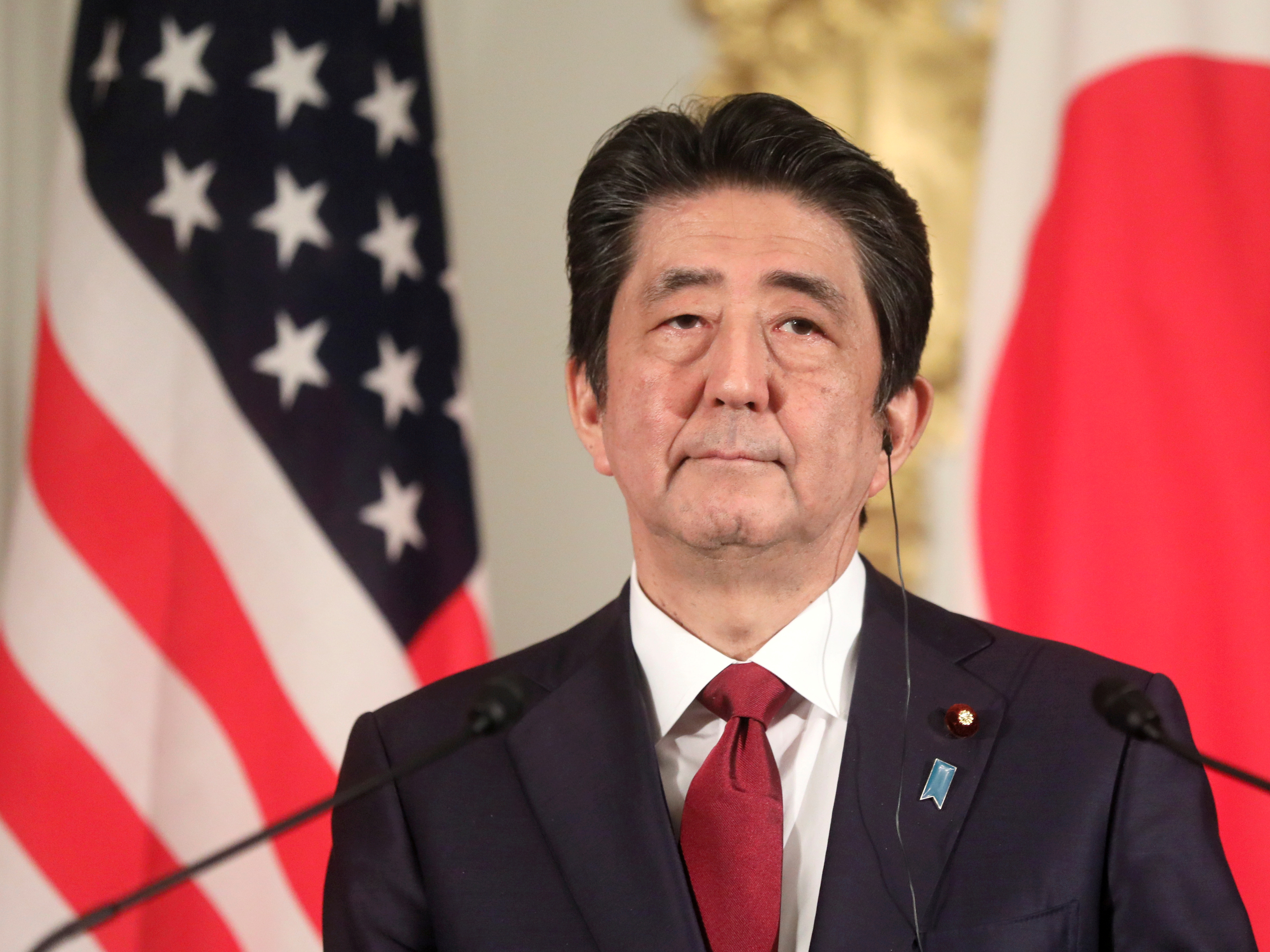- Japanese Prime Minster Shinzo Abe visited Iran this week in a bid to decrease tensions between the US and Iran.
- It was the first visit by a Japanese leader in 40 years.
- An explosion on a Japanese tanker in the Gulf of Oman marred the end of a disappointing visit.
Japanese Prime Minister Shinzo Abe’s historic trip to Iran to ease tensions between Iran and the US started off on a sour note – and ended in disaster, after an explosion hit Japanese tanker Kokuka Courageous in the Gulf of Oman early Thursday.
Abe’s visit – the first from a Japanese leader since the Iranian Revolution in 1979 – was officially to celebrate the 90th anniversary of diplomatic ties between the two countries. But it came as the relationship between the US and Iran deteriorated in the wake of the US’s departure from Joint Comprehensive Plan of Action (JCPOA), informally known as the Iran nuclear deal, as well as its decision to renew harsh economic sanctions on the country. The US has also increased its military presence in the region, sending B-52 bombers and an aircraft carrier to the Middle East.
“Japan wants to do as much as possible towards peace and stability in the region,” Abe said as he left Tokyo, NPR reported.
“Amid rising tension, it is essential for Iran to play a constructive role in strengthening peace and stability in the Middle East, so that this region won’t be destabilised further or accidental clashes won’t happen,” Abe told reporters at a press conference upon his arrival.
The visit had all the trappings of a stately occasion; an honor guard carrying the flags of both countries accompanied Abe's car to Saadabad Palace, where Iranian President Hassan Rouhani hosted him.

But Abe's visit was marred by conflict even before he arrived, as Iran-backed Yemeni Houthi rebels attacked Abha regional airport in Saudi Arabia on Wednesday, injuring 26, according to The New York Times. The ongoing proxy war between Iran and Saudi Arabia has created the world's worst humanitarian crisis in Yemen.
When Abe touched down at Tehran's Mehrabad International Airport on Wednesday, he was greeted by dozens of protesters, the Associated Press reports. Protesters criticized the idea of Abe as a mediator, pointing out his close relationship with US President Donald Trump; one protest sign called Abe "America's ambassador" in both Farsi and Japanese.
During Abe's visit, Iranian President Hassan Rouhani said that the country would give a "crushing response" in retaliation to an attack by the US. He also pointed out that Japan has stopped purchasing Iranian oil in response to US-imposed sanctions, though Japan was previously one of the five biggest consumers of Iranian oil, along with Pacific powers China and South Korea. South Korea has also ceased Iranian oil imports.
"Whenever the economic war stops, we will see a very positive development in the region and the world," Rouhani said.
But the Trump administration added more pressure to Iran by sanctioning the South Wealth Resources Group, an Iraqi company that the Treasury Department said had armed a foreign faction of Iran's Islamic Revolutionary Guard Corps (IRGC).
The boiling point came early Thursday morning, when an explosion hit Japanese tanker Kokuka Courageous in the Gulf of Oman. Trump has blamed Iran for the incident, as did US Secretary of State Mike Pompeo.

"Iran did do it, and you know they did it because you saw the boat," Trump said Friday. Another vessel belonging to the Norwegian company Frontline, the Front Altair, was also affected by the explosions.
Iran has repeatedly denied involvement in the incident.
"Reported attacks on Japan-related tankers occurred while PM @AbeShinzo was meeting with Ayatollah @khamenei_ir for extensive and friendly talks. Suspicious doesn't begin to describe what likely transpired this morning," Iran's Foreign Minister Javad Zarif tweeted on Thursday, later saying that the US blamed Iran in order to "sabotage diplomacy" between Japan and Iran.
Yutaka Katada, the president of the company that operates the Kokuka Courageous, disputes claims that a mine caused the explosion, the allegations put forward by the US. Katada said in a press conference that the crew saw an object fly toward the ship, and the explosion likely was not caused by a mine or torpedo, Japanese outlet NHK News reported.
The US released video Friday morning which it says shows Iranian forces removing an unexploded limpet mine from the Kokuka Courageous after the explosions occurred.
Rockford Weitz, director of the Fletcher Maritime Studies Program at Tufts University, told Business Insider that he believed Iran is behind the blasts, positing that perhaps Iran hoped to pressure Japan into asking the US to remove sanctions.
"In this situation ... it's indirect influence, they're trying to get the Japanese to influence Trump. I just don't think that's going to work. Trump and his administration are pretty clear that their philosophy is 'America First,'" Weitz said.
'It's almost like a show," he said. "The thing is, I think that was a mistake."
But Abe didn't get the result he was reaching for; the disastrous trip may yet push Iran further into the arms of Japan's regional rival, China, as Premier Xi Jinping pledged support for Iran, according to Chinese state media.

